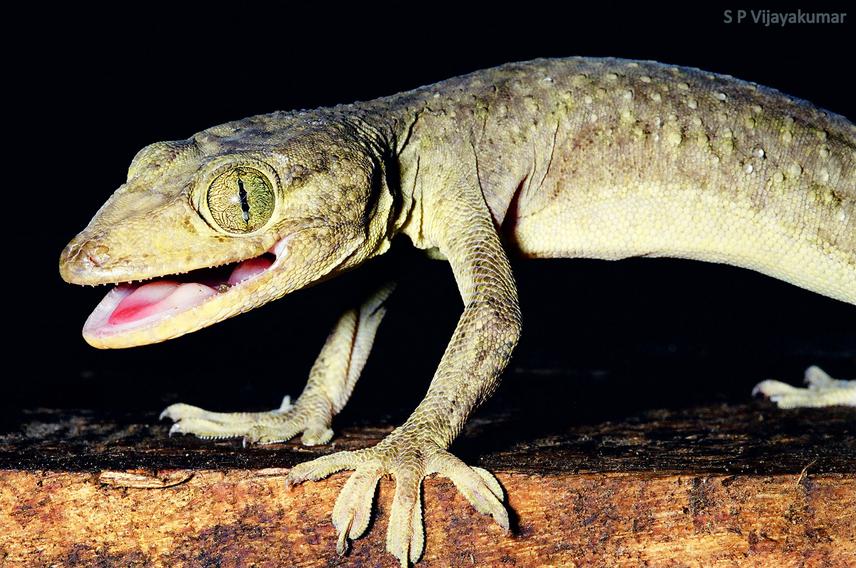Ashwini Venkatanarayana Mohan
The project aims at identifying diversity of the infraorder Gekkota, map species distribution and identify species and islands of conservation importance in the Andaman and Nicobar Islands.

Andaman Giant Gekko, Gekko verrauxi. Photo by S P Vijayakumar.
Project description: 95% of reptile extinctions have taken place on islands. Andaman and Nicobar Islands form the largest archipelago in the Bay of Bengal and are known for their rich and endemic herpetofauna. Geckos are among the least explored fauna in the islands with 13 currently recognized species, most of which were documented and described by visitors (travellers/scientists) from western countries in 18th and 19th centuries based on morphology alone. According to the IUCN red list criteria, four among these 13 species are recognized as 'least concern' and conservation status of rest of the species have not been assessed. Gecko species are known to be diverse in their dispersal abilities (e.g. commensal species, habitat specialists) and therefore can result in varied patterns of diversity and distribution. In order to capture these comparative diversity and distribution patterns, it is essential to apply both classical tools in taxonomy as well as utilize molecular genetic tools. By scoring genetic diversity, morphological diversity and species diversity, we will identify islands which are important to conserve diversity in two levels, species and populations. Although several smaller islands in the A&N Islands are protected, it is essential to protect portions of large human inhabited islands which harbour higher species diversity, but face maximum threats from human induced extinction risks. The results from this study will create awareness about this lesser known reptile group and further emphasize the need to provide better protection for species rich areas in larger human inhabited islands and apply conservation actions where required.